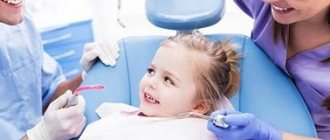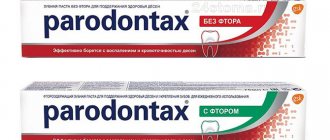One of the most common diseases of the oral cavity is stomatitis. This is a pathology that most often takes an infectious-inflammatory course and is the result of increased activity of lymphocytes in response to the ingress of pathogenic molecules that the child’s body cannot recognize. Decreased immunity is the main factor that provokes inflammatory processes in the mucous membranes of the oral cavity. In newborns and infants of the first year of life, the immune system continues to improve and cannot cope with all negative factors, therefore children under one year of age are considered the most vulnerable group of patients for the development of various forms of stomatitis.
Stomatitis in babies
Treatment of stomatitis in infants differs from therapy that may be recommended for an adult, so you cannot prescribe medications yourself. This is also due to the fact that stomatitis has several varieties, each of which differs in clinical course, symptoms and characteristics of the therapy. To correctly determine the type of disease, laboratory diagnostics (scraping from the tongue and gums) may be required, so if symptoms of stomatitis are detected in an infant, you should immediately go to the hospital. The pathology is treated by a local pediatrician or pediatric dentist.
Childhood stomatitis - how to help your baby?
Why does the disease appear?
In order to quickly cope with the disease and prevent re-infection, it is necessary to find out the reason that provoked the growth of pathogenic flora on the mucous membranes of the oral cavity. The main factor leading to the development of infectious forms of stomatitis is non-compliance with sanitary and hygienic standards for the treatment of toys, premises and objects surrounding the child. Bacteria and germs can enter the child's body from rattles, the surface of the changing table, and pacifiers. The development of fungal flora is often caused by insufficient sterilization of bottles (in children who are bottle-fed or mixed-fed).
Aphthous stomatitis in children
If a child has had conjunctivitis or other infectious diseases, it is necessary to carefully treat all the furniture and toys in the children's room, and also wash the bedding on which the baby slept at high temperatures. If the type of fabric allows, it is best to wash at a temperature not lower than +90°C, then iron it on all sides using the steam mode.
Lack of hygiene is not the only reason for the development of infectious processes in the oral cavity. Experts believe that the main role in the mechanism of the appearance of stomatitis belongs to the immunological factor. If a child has a strong immune system, his body will independently cope with infectious agents and other provoking factors.
Candidal stomatitis in children
The following reasons lead to poor functioning of the immune system in infants:
- birth before 32 weeks of gestation and associated severe prematurity (low birth weight);
- early transition from breastfeeding to feeding with artificial milk substitutes;
- early introduction of complementary foods and associated disturbances in the functioning of the digestive system, as well as allergic reactions;
- living in poor social and living conditions;
- poor maternal nutrition (in breastfed children), in which the child does not receive the required amount of useful and nutritious elements;
- short walks and poor hygiene.
Breast-feeding
If stomatitis in an infant in the first year of life is repeated more than 3-4 times, it is necessary to conduct a comprehensive examination. This picture can be observed in children suffering from indolent infectious diseases, for example, tuberculosis.
Important ! Heart disease and endocrine disorders can also lead to impaired immune activity. A decrease in local protective functions often occurs after taking antibacterial drugs, therefore, after antibiotics, it is recommended that the child be given drugs containing bifidobacteria or lactobacilli (“Bifidumbacterin”, “Acipol”, “Bifiform Baby”).
"Bifiform Baby"
Symptoms and treatment of stomatitis in children
Every adult is familiar with inflammation of the oral mucosa. This problem can overtake babies already in the first days of life. Often the cause of stomatitis in newborns is untreated thrush in the mother. Passing through the birth canal, the child immediately picks up the fungus. In general, stomatitis is usually diagnosed in older children - from 6 months to 3-4 years.
There are three main types of disease:
Aphthous stomatitis
The name is associated with the concept of “afta” - damage to the mucous membrane, ulcer. The aphtha is often surrounded by a bright red rim and has a yellow or gray coating. This stomatitis affects almost 20% of the population and can recur periodically throughout life (more often in children than in adults). The specific cause of this type of stomatitis has not yet been established (it could be an ordinary injury with the sharp corner of an object); it usually goes away without a trace, in a couple of weeks.
Herpetic stomatitis
The disease is caused by the herpes virus. It is always accompanied by malaise, headaches and pain in the mouth. This stomatitis is contagious and is often transmitted from child to child, for example, through shared toys. Most often it affects children from 1 to 3 years old.
Angular stomatitis
In everyday life, this type of disease is called “jamming”. This is severe irritation in the corners of the mouth. It can be caused by streptococcus, candidiasis or, most often, iron deficiency in the child’s body. If you notice such symptoms in your baby, be sure to donate blood for iron.
You can maintain the required level of the element with the help of certain foods in your diet, but you will have to make up for the deficiency only by taking medications prescribed by the doctor.
How to understand that a child has stomatitis?
If your baby is capricious, cries, refuses to eat, sleeps poorly, or may have a fever, be sure to examine his oral cavity. Most often, lesions (particularly aphthae) are located on the inner side of the lower lip. Even if there are no ulcers, you should be alerted to any heterogeneity in the oral mucosa, as well as plaque on it. In a healthy child, it is pink, smooth, and well moisturized. If the mucous membrane is not the same and the child does not feel well, consult a doctor. Only he can prescribe competent treatment, taking into account the cause of stomatitis. For this, a simple examination may be enough for the pediatrician; if necessary, he will ask for a blood test.
Treatment of stomatitis
It usually consists of several important points:
- Excluding solid foods and dishes with pronounced flavors, as well as hot foods, from the baby’s menu.
- Particularly careful oral hygiene: rinsing with antiseptic agents, changing the brush to a softer one.
- Use antipyretics if the baby’s temperature is outside the normal range.
Prevention of stomatitis
The main protection against such troubles is good immunity. Walk more, give your child a comfortable sleep, carefully monitor his diet (eat a balanced diet yourself if you are breastfeeding, or be very careful when choosing formula milk). If your baby is in good health, he may never know what stomatitis is, or he will tolerate it easily.
#PROMO_BLOCK#
Signs and symptoms in infancy
The main symptom of stomatitis is aphthous rashes on the surface of the mucous membranes, which can be single or have multiple courses. If the number of ulcers exceeds 20, the child is diagnosed with a severe form of stomatitis, requiring treatment in a hospital. Almost all babies experience an increase in the activity of the salivary glands and an increase in the production of salivary secretions - hypersalivation. Drooling can occur at any time of the day and does not depend on food intake. If you examine the oral cavity, you can see signs of an acute inflammatory process: redness of the soft tissues, fluid accumulation, swelling and bleeding of the gums.
Fungal stomatitis
Other signs of stomatitis include:
- What causes stomatitis?
- itching and soreness of the gums (the child puts everything into his mouth, making chewing movements that help relieve the soreness);
- temperature rise to +38°C;
- a dense coating of milky or dirty yellow color, having a creamy or curdled consistency;
- bad breath.
Stomatitis in a child
If you try to remove plaque from the surface of the gums or tongue using gauze or a napkin, underneath it there will be injured mucous membrane that will bleed and hurt. In very rare cases, a pinpoint rash of pale pink color may appear on the mucous membranes - this picture indicates the allergic nature of the disease.
Child's tongue is white
LACTOSTASIS OR MASTITIS - WHAT TO DO AND HOW TO AVOID?
Painful lump in the breast, redness, temperature - these words frighten almost every expectant mother. And it is with these complaints that nursing mothers very often turn to specialists. The diagnosis they hear is “lactostasis” or “mastitis”. These two diagnoses are often confused and even considered synonymous. Confusion also exists in specialized literature, and even more so in the stories of nursing and breastfeeding women.
Lactostasis is stagnation of milk caused by blockage of the duct. Milk accumulates, does not come out, and bursts the “locked” lobule, causing pain. Reabsorption of milk can provoke a rise in temperature. The filled lobule compresses the surrounding tissues, this causes swelling, which further complicates the release of milk.
Mastitis is inflammation of the breast tissue . Characteristic signs of inflammation are pain, redness and temperature, although often the picture can be blurry, for example, a slight temperature. Mastitis in a nursing mother is most often the result of prolonged lactostasis (swollen, injured tissues easily become inflamed), but it can also occur without previous stagnation, due to infection (for example, through cracks in the nipple or from foci of infection inside the body, as a consequence of an acute or chronic disease).
Understanding what exactly is happening to the breasts is not as easy as it seems. This is difficult to do by eye. Lactostasis can occur with severe pain and high fever, while mastitis can occur without fever. It is not always possible to palpate a lump, especially a deep one, and a specialist cannot always differentiate for sure what kind of lump it is - a lobule full of milk, or edematous tissue, or an abscess. Ultrasound comes to the rescue today, so if you have the slightest doubt, it is advisable to undergo an ultrasound examination. Moreover, in addition to its diagnostic role, it can also help therapeutically - ultrasound often “breaks” the plug and helps cope with lactostasis.
What to do?
But the nursing mother herself is usually not interested in the complexities of diagnosis. What is more important to her is what to do in a particular situation. Does it really matter what exactly happened? Yes. Because the treatment tactics are different. And if lactostasis can most often be dealt with on your own in a day or two, then mastitis usually requires the help of a specialist and often the use of antibiotics.
So, the first day after the onset of symptoms (pain, redness, thickening, rise in temperature) most often suggests lactostasis . You can try to cope with it with the following measures:
- The first and most important thing is to empty the sore breast well.
People often think that this requires a super-master of pumping or a mega-cool breast pump. However, the best assistant in emptying the breast is a properly sucking baby. Therefore, our first remedy will be frequent feeding from the sore breast.
If the baby sucks ineffectively (incorrectly attached to the breast, weak), rarely (for example, a child of the second half of the year or older than a year may breastfeed quite rarely), additional pumping may be useful. If there is a lot of milk and the baby's sucking is not enough to solve the situation, it is better to express the milk before feeding, and leave the baby the difficult job of sucking the milk out of the problematic ducts.
- Warmth before feeding/pumping (warm shower, warm diaper on the chest) may help;
- Cold after feeding/pumping has worked well (a bag of frozen berries wrapped in a diaper, a cloth soaked in cold water);
- You can massage the lump, but carefully - a hard massage increases the swelling and worsens the situation;
- drink when thirsty, it is better to drink plain cool water (hot drinks can increase the flow of milk) Limiting drinking will not help, on the contrary, if dehydrated, the milk may become thick, and it will begin to leak out even worse;
- If there is no improvement within 24 hours, you should seek help.
What should not be done if milk stagnation occurs?
- You can't stop feeding
- It may be risky to make vodka, alcohol, camphor compresses (may worsen milk secretion, there may be burns to the skin of the breast)
- There is no need to resort to hard, traumatic “kneading” of the chest - this can lead to injury and worsening the situation.
- Don't expect spontaneous improvement. If no progress is visible within a day or two, especially if it gets worse, you need to seek help.
Who should I turn to for help ?
- In case of mastitis, a woman needs to see a doctor , mammologist or gynecologist to make a diagnosis and, if necessary, prescribe antibiotics. Antibiotics are prescribed that are compatible with breastfeeding (that is, the active substance either does not penetrate into milk or penetrates in such small doses that it has no effect on the child).
- Be sure to continue feeding from the affected breast. An exception is made in the case of purulent mastitis - during the period of discharge of pus from the ducts, it is necessary to stop feeding the affected breast and express milk; after the end of the discharge of pus, feeding resumes. With healthy breasts, feeding is not interrupted.
Minimize risk
Expectant mothers are very concerned about how this situation can be prevented. There are no guaranteed methods. It happens that despite all efforts, stagnation of milk still occurs. But you can try to minimize the risks.
- Put your baby to your breast frequently (in the first month, breaks of more than 2 hours are undesirable).
- Make sure your baby is properly attached to the breast. An incorrectly sucked baby will empty it. If you are unable to put your baby to your breast, if congestion appears in the first month, it makes sense to seek help from a lactation consultant.
- Try to drink enough water.
- Avoid chest compression (tight underwear, underwired bra, pressure from the shoulder strap of a bag, backpack or baby carrier, sleeping on your stomach can lead to congestion).
- Do not let your baby suck on anything other than the breast (sucking on nipples and pacifiers increases the risk of lactostasis).
Let all these tips remain just “general information” information and feeding will be easy and problem-free. But even at the first signs of problems, there is no need to panic - with competent actions and timely seeking qualified help, most difficulties are quickly resolved.
Health to all nursing mothers and their wonderful babies!
Anastasia Vtulova, consultant on breastfeeding and child care (Center for Natural Development and Child Health)
You can consult our breastfeeding hotline:
+7 (daily from 7.00 to 23.00).
Previous
Next
Types and forms of the disease
In order to prescribe the correct treatment, it is necessary to find out what type of stomatitis the baby has developed. To do this, you need to show the child to a doctor: he will examine the oral cavity, assess the condition of the mucous membranes, the number and size of ulcers and erosions. In uncomplicated cases, a visual examination is sufficient to diagnose the pathology, but sometimes the doctor may prescribe additional tests, for example, bacterial culture on nutrient media. This is necessary for selecting treatment tactics and prescribing treatment.
Table. Types of stomatitis and their manifestations.
| Type of disease | Cause of occurrence | Symptoms and signs |
| Fungal | Infection with single-celled microscopic microorganisms – fungi. In 80% of cases, the causative agent of infection is a fungus of the Candida family. | A cheesy coating on the surface of the gums and tongue, which has a dense consistency, bad breath, and an increase in temperature within the subfebrile range. |
| Aphthous (another name is ulcerative) | Systemic diseases that have a chronic course and have a negative effect on the activity of the immune system. | The formation of aphthae - round ulcers covered with a cloudy white film layer. Aphthae are always painful, and their number can reach up to 30 pieces. |
| Catarrhal | Poor oral hygiene and non-compliance with sanitary standards for the treatment of toys and premises. | Redness of the mucous membrane, swelling of soft tissues, increased production of saliva. |
| Bacterial | Gram-positive and gram-negative microorganisms (mainly staphylococcus, chlamydia, streptococcus, klebsiella). | Yellow plaque, fever, signs of inflammation in the mucous membranes, pain during feeding. |
| Viral | Viruses of the herpes family (herpetic stomatitis) and viruses of the Vesiculorus genus (vesicular stomatitis). | Hyperemia of the mucous membranes, high temperature, increased salivation, blisters filled with cloudy liquid, which break through after 2-3 days. |
Note! There is another type of stomatitis - the allergic form. Allergic stomatitis develops as a result of interaction with irritating substances. These may be flavors and dyes included in children's toothpastes, or products used to treat toys and other items (antiseptics). This form of the disease is treated by an allergist.
Allergic stomatitis
Thrush on the chest
Breastfeeding is a very important process, which is sometimes fraught with difficulties. One possible problem is nipple candidiasis, which can cause discomfort for mother and baby.
Cause of candidiasis
The causative agent of thrush is the fungus Candida albicans. After it penetrates the damaged skin of the nipples, inflammation begins. One of the most common causes of candidiasis is the reaction of the female or child’s body to taking antibiotics. In addition to pathogenic microflora, such drugs also destroy beneficial bacteria, resulting in favorable conditions for the active proliferation of fungi. Often, nipple thrush occurs in parallel with oral candidiasis in infants.
How to treat
Before prescribing a nursing mother a course of drug therapy, the doctor may take a smear to confirm the infection. If the diagnosis of candidiasis is confirmed, the woman will be prescribed antifungal treatment. At the same time, medications will have to be given to the child, since pathogenic microorganisms multiply rapidly, and thrush easily spreads by touching.
Despite the fact that a woman needs to use medications, breastfeeding can and should be continued. This is due to the fact that in mild cases, it is sufficient to use external medications for the lesions, which is carried out after feeding. In advanced forms of candidiasis, mothers may be prescribed medications for systemic use (tablets). In this case, the issue of breastfeeding should be discussed with your doctor.
To prevent the spread of fungal infection during treatment, you must adhere to the following rules:
1. Mom should wash her hands thoroughly after any contact with the mammary glands, changing diapers, or applying medicine to the breast.
2. All family members must use personal towels.
3. Breast pads should be changed as often as possible.
4. All toys, pacifiers, pacifiers, and objects that the baby can put in his mouth must be sterilized or thoroughly washed.
5. Bed linen should be washed at the highest possible temperature, and after drying it should be ironed.
6. If a mother with nipple thrush expresses milk, it should not be given to the baby until the course of therapy has been completed, as there is a risk of re-infection. Low temperatures cannot destroy the fungus, so milk should not be frozen.
Main symptoms of candidiasis
You can suspect the development of thrush based on the characteristic symptoms. There is pain in the nipples or breasts, which does not go away for a long time after feeding. Visually, redness of the skin in the nipple area, rash and peeling are detected, and itching is disturbing.
In children, candidiasis manifests itself in the form of a whitish, cheesy coating on the oral mucosa, which cannot be removed with a napkin. A white film may appear on the lips, and anxiety increases during breastfeeding. In some cases, thrush is accompanied by diaper dermatitis.
If a woman experiences pain in one breast or nipple, an increase in body temperature, or a red spot on one of the mammary glands, she should immediately go to the hospital for examination, since these symptoms are not typical for candidiasis.
How to treat: drug therapy
Treatment of stomatitis should always begin with identifying the cause and causative agent of the disease. If an infant is diagnosed with a viral form of stomatitis, the doctor may prescribe the use of antiviral agents in the form of ointments, gels or creams. They must be applied 2 to 4 times a day to previously cleansed mucous membranes. To clean and disinfect the oral cavity, you can wipe the gums, tongue and surface of the cheeks with a light cloth moistened with a decoction of calendula or oak bark or an antiseptic solution, for example, Chlorhexidine.
"Chlorhexidine"
Ointments that can be used to treat infants:
- "Oxolinic ointment";
- "Tebrofen ointment";
- "Viferon";
- "Gerpferon";
- "Acyclovir".
"Oxolinic ointment"
"Viferon"
For severe symptoms of viral stomatitis, a specialist may recommend combined regimens. Including the local use of antiviral ointments and the use of interferon-based rectal suppositories (“Viferon”).
To treat bacterial and fungal stomatitis, agents with a wide spectrum of antimicrobial activity are needed. They can be used in the form of solutions, ointments or suspensions. Levorin and Nystatin suspensions have a good therapeutic effect. To destroy the fungus of the Candida family, the drug of choice is the Candide solution - it quickly copes with pathogenic flora and reduces the intensity of painful sensations after 2-3 days of use.
"Nystatin"
For bacterial stomatitis, it is necessary to treat the mucous membranes with any antiseptic solution 3-4 times a day. This can be “Miramistin”, “Chlorhexidine”, “Furacilin” (to prepare the solution you need to dissolve 1 tablet of “Furacilin” in 140 ml of hot water). The following medications can be used to heal and moisturize soft tissue:
- Which doctor treats stomatitis?
- "Vinilin";
- "Bura";
- Vitamin A in a gelatin shell.
"Vinilin"
If a child has a fever, it is better to use paracetamol-based products. It is better to give the drug to children older than three months in the form of a syrup with orange or strawberry flavor. Cefekon rectal suppositories are good for reducing fever and relieving pain, but they cannot be used for up to three months. If you need to bring down the temperature of a newborn, it is better to use products that contain ibuprofen - Nurofen or Ibuprofen.
"Ibuprofen"
Important! Antibiotics for the treatment of stomatitis are prescribed extremely rarely. If treatment is started at the initial stage of the pathology, in most cases it is possible to do without the use of potent antibacterial drugs. Only a doctor should prescribe and select the dosage of medications in this group.
At the dentist
Stomatitis: how to treat it?
What is stomatitis?
Stomatitis is an inflammation of the oral cavity, which is accompanied by the formation of small white ulcers on the mucous membrane, swelling, pain and general deterioration of the condition. It usually occurs in children, but adults are also susceptible to this disease.
What types are there?
Aphthous – Also known as ulcerative, is a single pale or yellow ulcer with a red outer ring or a cluster of such ulcers in the mouth, usually on the cheeks, tongue or inside the lip. The causes are diseases of the stomach, intestines, as well as weak immunity.
Cold sores – Caused by the herpes virus, these are fluid-filled sores that appear on or around the lips. They rarely form on the gums or roof of the mouth, mainly on the inside of the cheeks and lips. It is very important not to start treatment, as it often becomes a chronic condition. Herpes sores later become crusted with scabs and are usually accompanied by tingling, soreness or burning before true sores appear.
Allergic – Occurs due to individual intolerance to various allergens that cause hypersensitivity. It is also accompanied by the formation of ulcers in the mouth, lips, tongue and gums.
Catarrhal - The most common type, occurs due to poor oral hygiene, various injuries, and dental diseases. Very often, swelling of the palate and fever are added to the main symptoms.
Symptoms and where does it appear?
Stomatitis can be caused by a local infection, a systemic disease, a physical or chemical irritant, or an allergic reaction to various allergens.
It also very often appears due to poor oral hygiene and eating unwashed fruits and vegetables.
The main symptoms are:
- White sores in the mouth
- Blisters
- Facial peeling
- Swelling
- Oral dysesthesia (numbness)
- Burning mouth syndrome is painful despite normal appearance.
How to identify?
Despite the large number of types of stomatitis, it is very easy to treat, but the first thing you need to do is consult a dentist so that he can determine which type the patient has. This is achieved by various laboratory tests:
- Bacterial smears
- Viral swabs
- Tissue scrapings for mycology
- Biopsy for histology and direct immunofluorescence
- Blood tests
- Patch tests to identify contact allergies
Based on the results, an experienced specialist will select the right treatment and you will definitely end this disease.
How to cure?
Treatment of stomatitis depends on the cause and complexity of the disease.
These are mainly antibacterial/antiviral drugs, in combination with antiseptics. Sometimes doctors prescribe various gels and ointments, which contain anti-inflammatory and anesthetic substances, which must be applied directly to the infected area.
Also very common are rinses based on plants, such as chamomile, sage, calendula. They not only cope well with the disease, but are also an inexpensive substitute for other drugs.
Sources
"Stomatitis", World Medical Directory "The Merck Manuals",
https://www.msdmanuals.com/professional/dental-disorders/symptoms-of-dental-and-oral-disorders/stomatitis#v1145780
"Herpetic stomatitis", American National Library of Medicine
https://medlineplus.gov/ency/article/001383.htm
"Denture Stomatitis", Cleveland Clinic
https://my.clevelandclinic.org/health/diseases/21702-denture-stomatitis
Recommendations during treatment
It is very important to provide proper hygienic care for the baby during treatment. All toys must be thoroughly washed with hot water and baby or laundry soap. Wet cleaning should be carried out daily. It is best to wash the floors in the children's room with plain water, without adding disinfectants, as they often cause allergic reactions. It is necessary to ventilate the room in which the child spends most of his time at least 6 times a day. The last airing should be done before bedtime and last at least 30 minutes.
Children's dishes and bottles, as well as pacifiers and pacifiers, must be sterilized. To care for the skin, the baby must have his own towel - you cannot use towels used by other family members for this purpose, because the bacterial flora of an adult and an infant is very different.
Remedies for stomatitis in children
To speed up the healing of ulcers and the child’s recovery, you need to:
- keep plenty of fluids (breastfed children should be given breastfeeding “on demand”);
- if the child receives complementary feeding, make sure that all food is in liquid or puree form (the introduction of crackers and baby cookies into the diet should be postponed until complete recovery);
- increase the duration of daytime sleep - this will allow you to quickly restore strength and avoid overexertion, which is contraindicated for sick babies.
Feeding the baby
If, despite all the measures taken, the child’s condition does not improve after three days of treatment, it is necessary to visit the doctor again to rule out other diseases. After recovery, a preventive regimen and measures aimed at strengthening the immune system should be provided: hardening, gymnastics, frequent walks, water treatments. They must correspond to the age and physiological characteristics of the child, so before starting any health procedures it is better to consult a specialist.
Candidal stomatitis (thrush)
Treatment of candidal stomatitis includes eliminating the cause of the disease, providing a balanced diet, stimulating the immune system and improving oral hygiene. These measures may be enough to cure stomatitis in adults and children. To treat thrush in newborns, the oral cavity should be treated with the following drugs: soda solution, iodinol, 1% aniline dyes.
For moderate and severe cases, the treatment of candidal stomatitis includes oral medications, as well as antifungal ointments. Antifungal drugs are used internally to treat thrush, which are prescribed by the attending physician, taking into account the patient’s age. Treatment is continued until the symptoms of thrush in the oral cavity are completely eliminated, so that there are no relapses.
The course of treatment and type of medications depends on the health of your child, as well as the form of the disease.
Infants are almost always treated with topical antifungal medications. This type of medication is not used to treat adults because their mouths are larger and it is difficult to apply the medication to all affected areas.
Mild form of candidal stomatitis Treatment of mild forms of candidal stomatitis in adults occurs at home and does not present any difficulty. Treatment of the disease involves the use of antifungal elixirs and lozenges. The course of treatment usually lasts no more than two weeks.
A mild form of candidal stomatitis in infants is treated with external medications for at least two days after the symptoms disappear.
Moderate to severe candidal stomatitis More severe forms of the infection that have entered the esophagus are treated with oral antifungal medications. External use of similar drugs is also possible.
In severe cases of the disease, the course of treatment lasts more than two weeks.
Oral antifungal drugs are almost never used to treat pregnant women because of the potential for harm to the baby. But in very rare cases, namely in severe cases of the disease, such drugs can be used for treatment, since the infection can enter the blood. In this case, mother and child are at great risk.
Persistent and recurrent form of candidal stomatitis Persistent and recurrent form of candidal stomatitis require: • Twice as much treatment time until symptoms disappear. • Treatment with both oral and topical antifungal medications.
People with weakened immune systems can take antifungal medications on an ongoing basis to prevent thrush.
It is very important to eliminate all sources of infection, as the disease may return.
To prevent this, thoroughly disinfect toys, pacifiers, bottles and other items that the child puts in his mouth or may give to another baby. For more detailed information, read the relevant section on preventing thrush.
Diseases such as diabetes and HIV (immunodeficiency virus) increase the chances of developing thrush.
If the child has a mild form of this disease, then you just need to thoroughly wash bottles and pacifiers, and also regularly wipe the child’s mouth with a damp cloth. If you are breastfeeding, you should treat your nipples with an antifungal medication, such as nystatin (mycostatin). After feeding, dry your breasts and apply lanolin to relieve soreness.
If you wear dentures and your doctor has diagnosed you with candidal stomatitis, you need to remove them daily, wash your dentures every evening and wipe your mouth. • Remove dentures before bed. • Rinse them thoroughly using a clean toothbrush and water. • Leave them overnight in chrogexidine gluconate solution, which can be purchased at the pharmacy. An alternative is a dental and oral cleanser (Polident or Efferdent). • Rinse your dentures thoroughly in the morning. If you soaked them in a solution of chrogexidine gluconate, you should not use fluoride-containing toothpaste for 30 minutes after putting the dentures back (fluoride weakens the effect of chrogexidine gluconate).
Sometimes, for candidal stomatitis, a 1% solution of gentian violet is used, a dye that kills bacteria and is an antifungal agent. This substance can only be used by adults, so you should consult your doctor if you are going to use it on your child. If gentian violet is ineffective, the attending physician will prescribe another remedy.
Do not despair! If thrush causes discomfort, try the following tips: • Drink cold drinks, such as water, iced tea, or frozen juices. • eat soft foods that are easy to swallow, such as ice cream or sweet cream; • if the white coating causes pain, drink from a straw; • rinse your mouth several times a day with warm water (1 teaspoon of salt per glass of water).
How to help with chickenpox?
There is currently no cure for chickenpox. Usually the disease goes away on its own, and therapy is limited to smearing the rash with aniline dyes with bactericidal properties. A solution of brilliant green (“zelenka”) is usually used. You can take an antipyretic to relieve your general condition.
To relieve itching use:
- solution of iodine tincture (2-3%);
- solution of potassium permanganate (1:5000);
- hydrogen peroxide (3%);
- glycerol.
In some cases, antihistamines can help relieve itching. But you should not take them uncontrollably: it is better to call a doctor at home and determine acceptable medications. Showering is allowed, but without a washcloth to avoid damaging the bubbles. The same applies to the use of towels - after water procedures, you need to carefully pat your body dry with a cloth.










